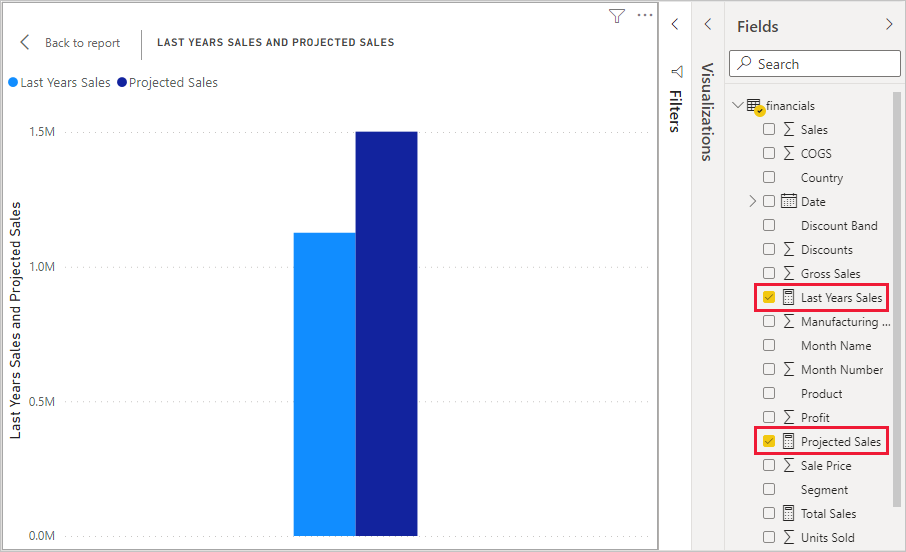| Editorial Team

Power BI, a business analytics tool by Microsoft, empowers organizations to visualize and analyze their data for informed decision-making. Among its powerful features are Power BI Measures and Calculated Columns, essential elements that enhance data manipulation and analysis. In this article, we’ll explore the nuances of these features, understand where calculated columns can be effectively employed, and delve into creating new measures in Power BI.
Understanding Power BI Measures:
Measures in Power BI are dynamic calculations used in reports and visualizations. Unlike regular columns, measures are not stored in the dataset but are calculated on the fly, providing real-time insights. Commonly utilized in summarizing data, measures aggregate information based on defined calculations. One can use Data Analysis Expressions (DAX), a formula language specific to Power BI, to create a measure.
Calculating in Power BI:
Power BI’s strength lies in its ability to perform complex calculations effortlessly. The calculation capabilities are vast, whether it’s aggregating data, applying mathematical operations, or deriving insights from multiple sources. Users can leverage DAX functions to compute values dynamically, providing a flexible and interactive approach to data analysis.
Power BI Calculated Columns:
While measures are dynamic and calculated on the fly, calculated columns are static and are part of the dataset. Calculated columns allow users to add new data to a table based on existing column values or other calculations. These columns are handy when constant values or static calculations are required within the dataset.
Where Can a Calculated Column Be Used?
Calculated columns find their applications in various scenarios. They can be employed for data cleansing, transforming text or numerical data, and generating additional insights for reporting purposes. Calculated columns are integral in creating relationships between tables and enhancing data modeling capabilities in Power BI.
Creating New Measures in Power BI:
To create a new measure in Power BI, users must navigate to the ‘Modeling’ tab and select ‘New Measure.’ Subsequently, a DAX formula is input to define the calculation. This flexibility allows for creating tailored measures that cater to specific analytical needs, providing a customized and robust reporting experience.
Best Practices for Power BI Measures and Calculated Columns:
- Optimize DAX formulas for performance.
- Leverage measures for dynamic calculations in reports.
- Use calculated columns judiciously to enhance data modeling.
- Document DAX formulas for better collaboration and understanding.
Conclusion:
In conclusion, Power BI Measures and Calculated Columns are indispensable tools for transforming raw data into meaningful insights. Whether you’re looking to perform real-time calculations, create dynamic reports, or enhance data modeling, mastering these features is essential for unlocking the full potential of Power BI. By understanding the nuances of measures and calculated columns. Businesses can elevate their data analytics capabilities and drive informed decision-making.
FAQ’s
What is a Power BI Measure?
A Power BI Measure is a dynamic calculation used in reports and visualizations. Unlike regular columns, measures are not stored in the dataset but are calculated on the fly, providing real-time insights. They are commonly used for summarizing data based on defined calculations using Data Analysis Expressions (DAX).
How can I perform calculations in Power BI?
Power BI provides a robust platform for performing calculations. Users can leverage the power of Data Analysis Expressions (DAX) to create formulas that perform various calculations, such as aggregating data, applying mathematical operations, and deriving insights from multiple sources.
What is a Power BI Calculated Column?
A Power BI Calculated Column is a static column that becomes part of the dataset. Unlike measures, calculated columns are stored in the dataset and can add new data based on existing column values or other calculations. They are beneficial for constant values or static calculations within the dataset.
Where can a Calculated Column be effectively used?
Calculated columns find applications in various scenarios. They can be employed for data cleansing, transforming text or numerical data, and generating additional insights for reporting purposes. Calculated columns are also integral in creating relationships between tables, enhancing data modeling capabilities in Power BI.
How can I create a new measure in Power BI?
To create a new measure in Power BI, navigate to the ‘Modeling’ tab and select ‘New Measure.’ Input a Data Analysis Expressions (DAX) formula to define the calculation. This flexibility allows users to create tailored measures catering to specific analytical needs, providing a customized and robust reporting experience.
What are some best practices for using Power BI Measures and Calculated Columns?
- Optimize DAX formulas for performance to ensure efficient calculations.
- Leverage measures for dynamic calculations in reports to provide real-time insights.
- Use calculated columns judiciously to enhance data modeling and relationships.
- Document DAX formulas for better collaboration and understanding within the team.

